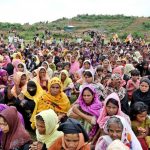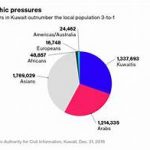Agriculture is the single largest producing sector of Bangladesh economy since it comprises about 30% of the country’s GDP and employs mare than 60% of the total labour force. Most Bangladeshis earn their living from agriculture. Rice is Bangladesh’s principal crop. Jute was considering golden fibre of Bangladesh but now a days getting less importance to produce and wheat is assuming greater importance.
Tea is grown in the northeast hilly areas. Because of Bangladesh’s fertile soil and normally ample water supply, rice can be grown and harvested three times a year in many areas. Due to a number of factors, Bangladesh’s labor-intensive agriculture has achieved steady increases in food grain production despite the often unfavorable weather conditions. These include better flood control and irrigation, a generally more efficient use of fertilizers, and the establishment of better distribution and rural credit networks.
Population pressure continues to place a severe burden on productive capacity, creating a food deficit, especially of wheat. Foreign assistance and commercial imports fill the gap. Underemployment remains a serious problem, and a growing concern for Bangladesh’s agricultural sector will be its ability to absorb additional manpower. Finding alternative sources of employment will continue to be a daunting problem for future governments, particularly with the increasing numbers of landless peasants who already account for about half the rural labor force.
Although rice and jute are the primary crops, maize and vegetables are also get importance to produce. Due to the expansion of irrigation networks, some wheat producers have switched to cultivation of maize which is used mostly as poultry feed.
Rice was produced 28.8 million metric tons in 2005-2006 (July-June). By comparison, wheat output in 2005-2006 was 9 million metric tons.
Bangladesh is the fourth largest rice producing country in the world. National sales of the classes of insecticide used on rice, including granular carbofuran, synthetic pyrethroids, and malathion exceeded 13,000 tons of formulated product in 2003. The insecticides not only represent an environmental threat, but are a significant expenditure to poor rice farmers. The Bangladesh Rice Research Institute is working with various NGOs and international organizations to reduce insecticide use in rice.
Food grains are cultivated primarily for subsistence. Only a small percentage of total production makes its way into commercial channels. Other Bangladeshi food crops, however, are grown chiefly for the domestic market. They include potatoes and sweet potatoes, oilseeds and fruits such as bananas, jackfruit, mangoes, and pineapples. Estimates of sugarcane production put annual production at more than 7 million tons per year, most of it processed into a coarse, unrefined sugar known as gur, and sold domestically.





